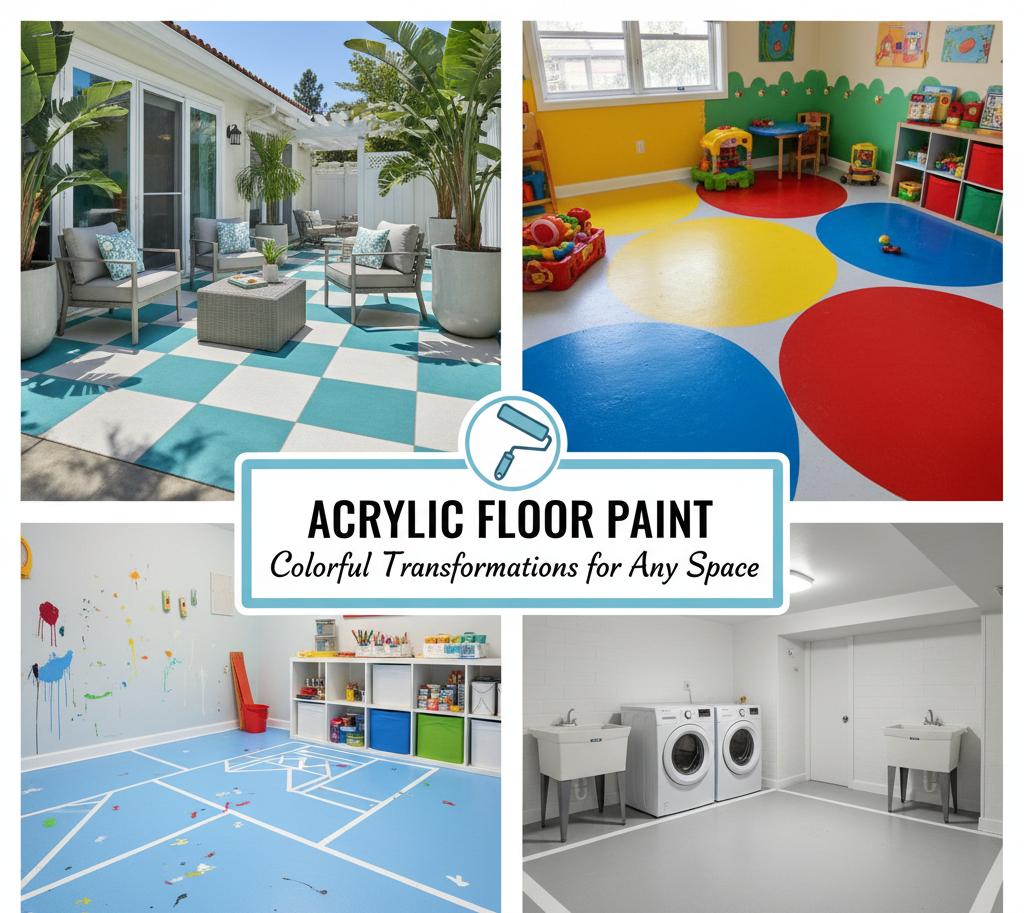A Fresh Look at Acrylic Floor Paint: A Practical Guide for Modern Homes

Floors are often the unsung heroes of the home. We walk on them, spill on them, drag furniture across them, and still expect them to look spotless. So when it comes to updating a tired surface, choosing the right coating can make all the difference. Acrylic floor paint has become a popular option across UK homes for its versatility, smooth finish, and impressive durability and it’s easy to see why.
Why Acrylic Floor Paint Is on the Rise
Over the last few years, there’s been growing interest in acrylic floor paint UK wide, especially among homeowners tackling DIY renovations. Unlike heavy-duty industrial coatings, acrylic paints offer a more user-friendly approach without compromising on performance.
They’re fast-drying, low odour, and resistant to general wear, making them ideal for everyday living spaces. From concrete utility rooms to wooden workshop floors, acrylic paints deliver a neat, modern look while also being relatively simple to maintain.
Acrylic vs Alkyd: What’s the Difference?
You might have come across alkyd paint when comparing your options. While both products have their strengths, understanding the differences helps you choose the right one for your space.
-
Acrylic paints are water-based, meaning quicker drying times and easier clean-up. They’re great for interior floors and areas where you want a smooth, low-fuss finish.
-
Alkyd paints, on the other hand, are oil-based and tend to offer a tougher, more traditional coating. They’re often used in more demanding environments, though they require longer curing times and stronger solvents during clean-up.
For most home projects, acrylic coatings strike an ideal balance between practicality and durability, particularly if you're working in smaller or more enclosed rooms.
Can You Use Acrylic Paint on Floors?
Quite simply: yes — and many people do. Using acrylic paint on floors is a brilliant way to transform an otherwise dull surface without the need for extensive renovation.
Well-applied acrylic floor paint can rejuvenate:
-
Garage and workshop floors
-
Spare rooms or home offices
-
Storage spaces
-
Indoor concrete areas
-
Wooden floors that need freshening up
Thanks to its flexibility, acrylic paint adheres well to both timber and masonry surfaces, providing a smooth, attractive finish that stands up to everyday life.
Tips for Getting a Flawless Result
1. Prep Thoroughly
Good preparation will always pay off. Sweep, scrub, and sand where needed. Make sure the surface is completely dry before painting.
2. Prime for Better Adhesion
Some floors benefit from a primer coat to help the paint bond more effectively — especially older or porous surfaces.
3. Apply Thin, Even Coats
Acrylic paint dries quickly, so applying two or three thin layers is usually more effective than one heavy coat.
4. Allow Adequate Curing Time
Even though acrylic dries surface-level fast, it takes a little longer to fully harden. Be patient before moving furniture back in.
Finding Reliable Products and Advice
If you’re exploring high-quality coatings and looking for trustworthy guidance, Trade Supplies UK is a helpful starting point for DIYers and professionals alike. Their ranges and resources can support everything from quick refreshes to more involved renovation projects.
Final Thoughts
Breathing new life into your floors doesn’t have to be complicated. Acrylic floor paint offers an affordable, practical, and stylish solution for homeowners wanting a fresh, long-lasting finish. With the right prep and a bit of patience, even the most neglected floor can look clean, modern, and beautifully renewed.
- AI
- Vitamins
- Health
- Admin/office jobs
- News
- Art
- Causes
- Crafts
- Dance
- Drinks
- Film
- Fitness
- Food
- Games
- Gardening
- Health
- Home
- Literature
- Music
- Networking
- Other
- Party
- Religion
- Shopping
- Sports
- Theater
- Wellness


